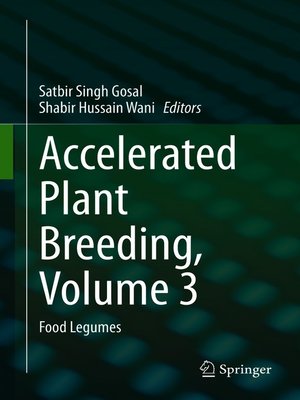Accelerated Plant Breeding, Volume 3
ebook ∣ Food Legumes · Biomedical and Life Sciences
By Satbir Singh Gosal

Sign up to save your library
With an OverDrive account, you can save your favorite libraries for at-a-glance information about availability. Find out more about OverDrive accounts.
Find this title in Libby, the library reading app by OverDrive.



Search for a digital library with this title
Title found at these libraries:
| Library Name | Distance |
|---|---|
| Loading... |
Plant improvement has shifted its focus from yield, quality and disease resistance to factors that will enhance commercial export, such as early maturity, shelf life and better processing quality. Conventional plant breeding methods aiming at the improvement of a self-pollinating crop, such as wheat, usually take 10-12 years to develop and release of the new variety. During the past 10 years, significant advances have been made and accelerated methods have been developed for precision breeding and early release of crop varieties.
This work summarizes concepts dealing with germplasm enhancement and development of improved varieties based on innovative methodologies that include doubled haploidy, marker assisted selection, marker assisted background selection, genetic mapping, genomic selection, high-throughput genotyping, high-throughput phenotyping, mutation breeding, reverse breeding, transgenic breeding, shuttle breeding, speed breeding, low cost high-throughput field phenotyping, etc. It is an important reference with special focus on accelerated development of improved crop varieties.
This work summarizes concepts dealing with germplasm enhancement and development of improved varieties based on innovative methodologies that include doubled haploidy, marker assisted selection, marker assisted background selection, genetic mapping, genomic selection, high-throughput genotyping, high-throughput phenotyping, mutation breeding, reverse breeding, transgenic breeding, shuttle breeding, speed breeding, low cost high-throughput field phenotyping, etc. It is an important reference with special focus on accelerated development of improved crop varieties.







